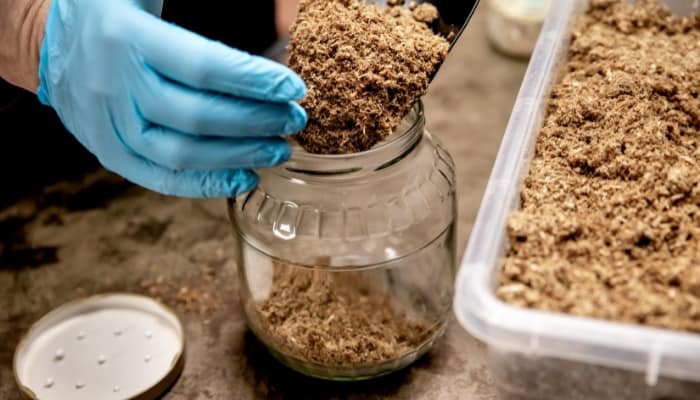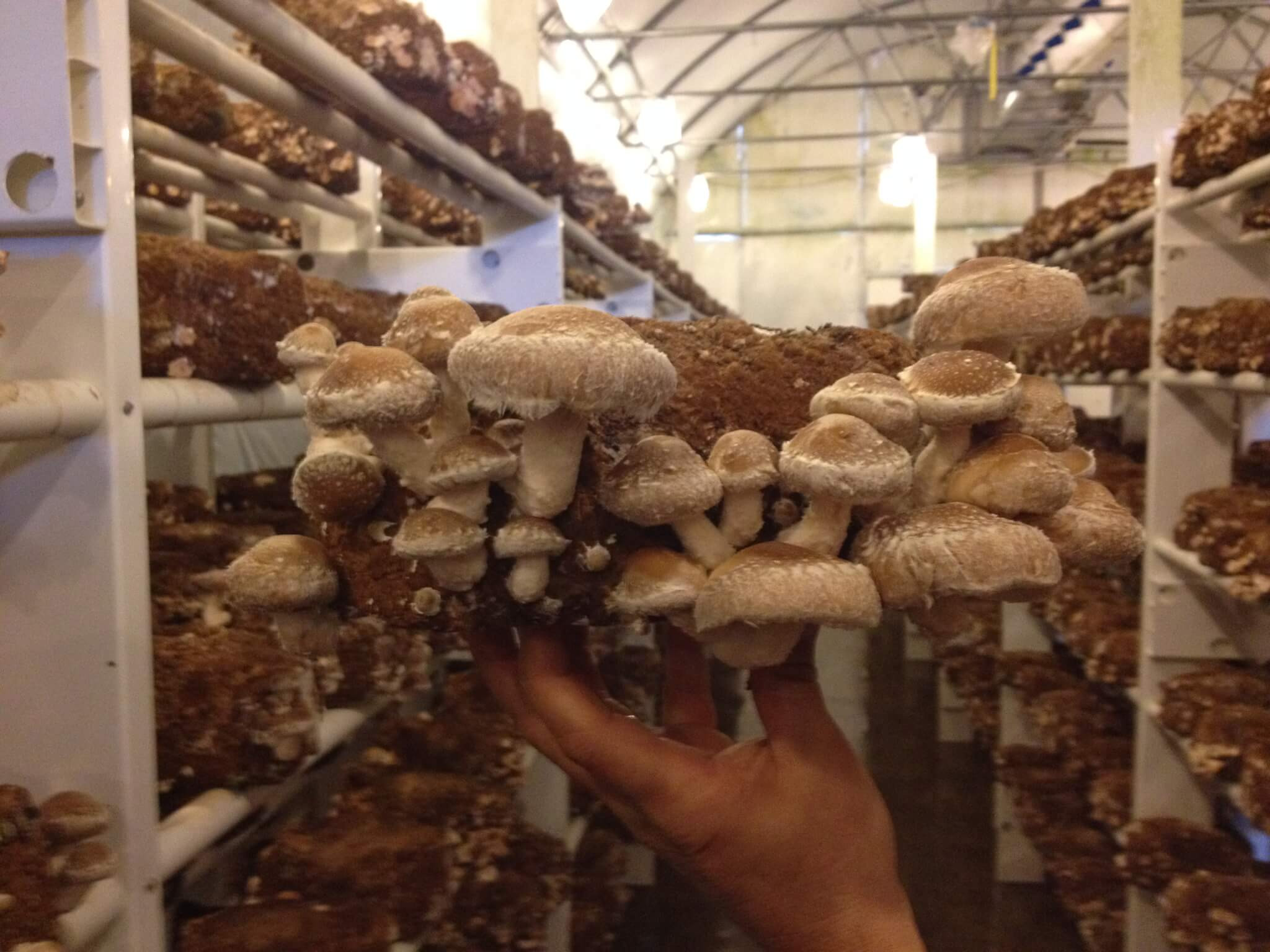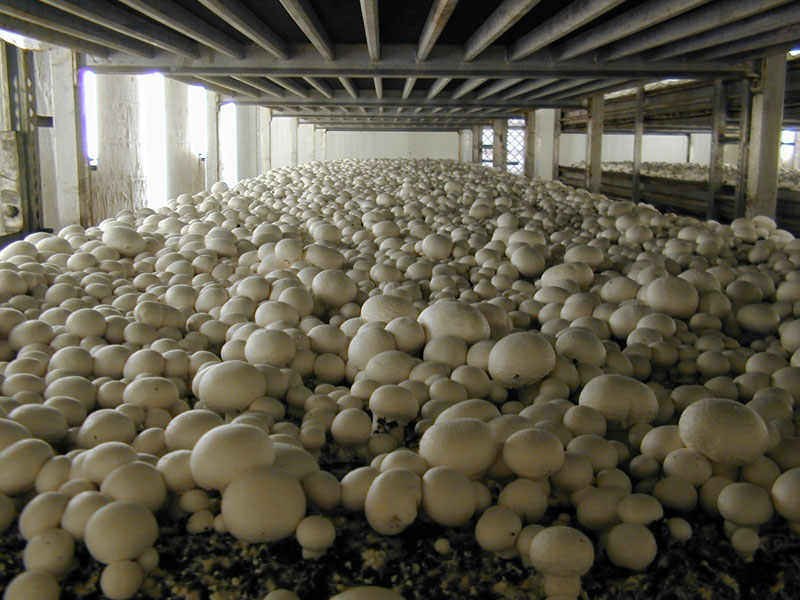Understanding the Ideal Conditions for Mushroom Cultivation
Mushroom cultivation requires a delicate balance of temperature, humidity, and light to create an optimal environment for growth. Different species of mushrooms have unique requirements, and understanding these conditions is crucial for successful cultivation. For instance, oyster mushrooms thrive in temperatures between 55°F to 65°F (13°C to 18°C), while shiitake mushrooms prefer temperatures between 40°F to 55°F (4°C to 13°C). Maintaining a consistent temperature range is essential for promoting healthy mycelium growth and preventing contamination.
Humidity is another critical factor in mushroom cultivation. Most species require a humid environment, typically between 70% to 90% relative humidity. However, some species like the Morel mushroom require a drier environment, with a relative humidity of around 50%. Providing the right level of humidity can be achieved through misting, fogging, or using a humidifier.
Light is also an essential factor in mushroom cultivation. While some species can tolerate direct sunlight, others require low light conditions. For example, the Lion’s Mane mushroom prefers low light conditions, while the Button mushroom can tolerate moderate light. Understanding the specific light requirements of your mushroom variety is vital for promoting healthy growth and preventing damage.
By understanding the ideal conditions for mushroom cultivation, growers can create an optimal environment for their specific variety. This includes maintaining the right temperature, humidity, and light levels, which can significantly impact the quality and yield of the mushrooms. Whether you’re growing mushrooms indoors or outdoors, providing the right conditions is crucial for success. The best place to grow mushrooms is one that meets the specific needs of your variety, and with the right conditions, you can enjoy a bountiful harvest of delicious and healthy mushrooms.
How to Choose the Right Substrate for Your Mushroom Variety
When it comes to mushroom cultivation, the substrate is a critical component of the growing process. The substrate provides the necessary nutrients and support for the mycelium to grow and produce mushrooms. With so many options available, choosing the right substrate for your mushroom variety can be overwhelming. In this section, we will explore the most common substrates used for mushroom cultivation, including straw, compost, and wood chips.
Straw is a popular substrate for mushroom cultivation due to its high carbon content and low nitrogen levels. It is an ideal substrate for oyster and shiitake mushrooms, as it provides the necessary nutrients for healthy mycelium growth. However, straw can be prone to contamination, so it’s essential to pasteurize or sterilize it before use.
Compost is another common substrate used for mushroom cultivation. It is rich in nutrients and provides a diverse range of microorganisms that support healthy mycelium growth. Compost is an ideal substrate for button and crimini mushrooms, as it provides the necessary nutrients for fruiting. However, compost can be high in nitrogen, which can lead to contamination and poor mushroom quality.
Wood chips are a popular substrate for mushroom cultivation, particularly for species like shiitake and oyster mushrooms. Wood chips provide a high carbon content and a low nitrogen level, making them an ideal substrate for healthy mycelium growth. However, wood chips can be prone to drying out, so it’s essential to maintain optimal moisture levels.
When choosing a substrate for your mushroom variety, it’s essential to consider the specific needs of your species. Different species have unique requirements, and using the wrong substrate can lead to poor mushroom quality and low yields. By selecting the right substrate, you can create an optimal environment for your mushrooms to grow and thrive. Whether you’re growing mushrooms indoors or outdoors, using the right substrate is crucial for success. The best place to grow mushrooms is one that provides the necessary nutrients and support for healthy mycelium growth, and with the right substrate, you can achieve this.
The Role of Water and Moisture in Mushroom Growth
Water and moisture play a crucial role in mushroom growth and development. Mushrooms require a consistent supply of moisture to maintain optimal growth rates and prevent dehydration. However, overwatering can be detrimental to mushroom health, leading to contamination and poor quality.
The ideal moisture level for mushroom growth varies depending on the species, but most mushrooms require a relative humidity of 70-90%. To maintain optimal moisture levels, growers can use a variety of techniques, including misting, fogging, and humidification. Misting involves spraying water onto the substrate and surrounding environment, while fogging involves creating a fine mist that settles on the substrate. Humidification involves using a humidifier to maintain a consistent relative humidity level.
When watering mushrooms, it’s essential to avoid overwatering, which can lead to contamination and poor quality. Growers can use a variety of techniques to avoid overwatering, including using a moisture meter to measure the substrate’s moisture level and adjusting the watering schedule accordingly. It’s also essential to ensure good air circulation to prevent moisture from accumulating and promoting contamination.
In addition to maintaining optimal moisture levels, growers can also use water to stimulate mushroom growth. For example, some growers use a technique called “water shocking,” which involves suddenly increasing the moisture level to stimulate mushroom growth. This technique can be effective for promoting fruiting and increasing yields.
By understanding the role of water and moisture in mushroom growth, growers can create an optimal environment for their mushrooms to thrive. Whether you’re growing mushrooms indoors or outdoors, maintaining optimal moisture levels is crucial for success. The best place to grow mushrooms is one that provides the necessary moisture and support for healthy mycelium growth, and with the right techniques, you can achieve this.
Creating a Sterile Environment for Mushroom Cultivation
Maintaining a sterile environment is crucial for successful mushroom cultivation. Contamination can occur through various means, including airborne spores, insects, and human contact. To prevent contamination, it’s essential to create a sterile environment that minimizes the risk of contamination.
One of the most effective ways to create a sterile environment is to use an autoclave. An autoclave is a device that uses high-pressure steam to sterilize equipment and substrates. By using an autoclave, you can ensure that your equipment and substrates are free from contaminants and ready for use.
In addition to using an autoclave, it’s also essential to use personal protective equipment (PPE) when handling mushrooms and substrates. This includes wearing gloves, a face mask, and a lab coat. By wearing PPE, you can prevent the transfer of contaminants from your skin and clothing to the mushrooms and substrates.
Another important aspect of creating a sterile environment is to maintain good hygiene practices. This includes washing your hands regularly, cleaning and disinfecting equipment and surfaces, and avoiding cross-contamination between different areas of the growing space.
By creating a sterile environment, you can minimize the risk of contamination and ensure that your mushrooms grow healthy and strong. A sterile environment is essential for successful mushroom cultivation, and by following these tips, you can create an environment that is conducive to healthy mushroom growth. The best place to grow mushrooms is one that is free from contaminants and provides a sterile environment for growth.
Top Locations for Growing Mushrooms Indoors and Outdoors
When it comes to growing mushrooms, the location can play a significant role in determining the success of your crop. Whether you’re growing indoors or outdoors, it’s essential to choose a location that provides the right conditions for your mushrooms to thrive.
Indoor locations such as basements, garages, and greenhouses can be ideal for growing mushrooms. These locations provide a controlled environment that can be optimized for mushroom growth, with consistent temperatures, humidity, and light levels. Additionally, indoor locations can be protected from pests and diseases that can affect outdoor crops.
Outdoor locations such as gardens, forests, and fields can also be suitable for growing mushrooms. These locations provide a natural environment that can be optimized for mushroom growth, with plenty of organic matter and moisture. However, outdoor locations can be more challenging to control, with variables such as weather, pests, and diseases affecting the crop.
When selecting a location for growing mushrooms, it’s essential to consider factors such as temperature, humidity, light, and air circulation. The ideal location will depend on the specific type of mushroom being grown, as well as the climate and environment of the area.
Some popular locations for growing mushrooms include:
– Basements: Basements can provide a consistent temperature and humidity level, making them ideal for growing mushrooms.
– Greenhouses: Greenhouses can provide a controlled environment with optimal temperature, humidity, and light levels, making them ideal for growing mushrooms.
– Gardens: Gardens can provide a natural environment with plenty of organic matter and moisture, making them suitable for growing mushrooms.
– Forests: Forests can provide a natural environment with plenty of organic matter and moisture, making them suitable for growing mushrooms.
By choosing the right location for your mushroom crop, you can create an optimal environment for growth and maximize your yields. The best place to grow mushrooms is one that provides the right conditions for your specific variety, whether it’s indoors or outdoors.
Using Greenhouses and Indoor Growing Spaces for Mushroom Cultivation
Greenhouses and indoor growing spaces can provide an ideal environment for mushroom cultivation, offering a controlled and optimized space for growth. These spaces can be designed to mimic the natural environment of the mushroom, providing the necessary temperature, humidity, and light levels for optimal growth.
Greenhouses are a popular choice for mushroom cultivation, as they provide a controlled environment that can be optimized for mushroom growth. Greenhouses can be equipped with heating and cooling systems, humidifiers, and lighting systems, allowing for precise control over the environment. This can be particularly beneficial for mushroom varieties that require specific temperature and humidity levels.
Indoor growing spaces, such as basements or indoor grow rooms, can also be used for mushroom cultivation. These spaces can be designed to provide a controlled environment, with temperature, humidity, and light levels optimized for mushroom growth. Indoor growing spaces can be particularly beneficial for mushroom varieties that require low light levels or specific temperature and humidity conditions.
When using greenhouses or indoor growing spaces for mushroom cultivation, it’s essential to consider factors such as temperature, humidity, light, and air circulation. The ideal environment will depend on the specific type of mushroom being grown, as well as the climate and environment of the area.
Some benefits of using greenhouses and indoor growing spaces for mushroom cultivation include:
– Controlled environment: Greenhouses and indoor growing spaces provide a controlled environment that can be optimized for mushroom growth.
– Increased yields: By providing a controlled environment, greenhouses and indoor growing spaces can increase mushroom yields and quality.
– Reduced contamination: Greenhouses and indoor growing spaces can reduce the risk of contamination, as they provide a controlled environment that can be optimized for mushroom growth.
By using greenhouses and indoor growing spaces for mushroom cultivation, you can create an optimal environment for growth and maximize your yields. The best place to grow mushrooms is one that provides the right conditions for your specific variety, whether it’s in a greenhouse or indoor growing space.
Outdoor Mushroom Cultivation: Tips and Considerations
Outdoor mushroom cultivation can be a rewarding and productive way to grow mushrooms, but it requires careful planning and attention to detail. When growing mushrooms outdoors, it’s essential to consider factors such as climate, soil quality, and pest management.
One of the most critical factors to consider when growing mushrooms outdoors is the climate. Mushrooms require a consistent temperature and humidity level to grow, and extreme weather conditions can be detrimental to their health. In general, mushrooms prefer temperatures between 40°F and 60°F (4°C and 15°C) and humidity levels above 70%.
Soil quality is also essential for outdoor mushroom cultivation. Mushrooms require a nutrient-rich soil with good drainage and aeration. A mix of compost, peat moss, and perlite can provide the necessary nutrients and structure for healthy mushroom growth.
Pest management is another critical consideration when growing mushrooms outdoors. Pests such as slugs, snails, and insects can damage or destroy mushroom crops. Using natural pest control methods such as copper tape, beer traps, and diatomaceous earth can help to minimize pest damage.
Some benefits of outdoor mushroom cultivation include:
– Natural environment: Outdoor mushroom cultivation allows mushrooms to grow in their natural environment, which can result in healthier and more flavorful mushrooms.
– Increased yields: Outdoor mushroom cultivation can result in higher yields than indoor cultivation, as mushrooms have more space to grow and can take advantage of natural light and water.
– Reduced costs: Outdoor mushroom cultivation can be less expensive than indoor cultivation, as it eliminates the need for artificial lighting and climate control.
However, outdoor mushroom cultivation also has some challenges, such as:
– Weather conditions: Extreme weather conditions such as heavy rain, drought, or extreme temperatures can damage or destroy mushroom crops.
– Pests and diseases: Outdoor mushroom cultivation is more susceptible to pests and diseases, which can damage or destroy mushroom crops.
By understanding the benefits and challenges of outdoor mushroom cultivation, you can create an optimal environment for your mushrooms to grow and thrive. The best place to grow mushrooms is one that provides the right conditions for your specific variety, whether it’s indoors or outdoors.
Maximizing Mushroom Yield and Quality
To maximize mushroom yield and quality, it’s essential to provide optimal growing conditions, including temperature, humidity, light, and nutrient-rich substrate. Additionally, regular maintenance and care can help to promote healthy growth and prevent contamination.
Pruning is an essential technique for maximizing mushroom yield and quality. Pruning involves removing dead or damaged mushrooms to promote healthy growth and prevent the spread of disease. Regular pruning can help to increase yields and improve the overall quality of the mushrooms.
Harvesting is another critical aspect of mushroom cultivation. Harvesting involves picking the mushrooms at the right time to ensure optimal flavor and texture. The timing of harvesting will depend on the specific variety of mushroom, but generally, mushrooms are ready to harvest when they are fully grown and the caps are open.
Maintaining optimal growing conditions is also essential for maximizing mushroom yield and quality. This includes providing the right temperature, humidity, and light levels, as well as ensuring good air circulation and maintaining a clean and sterile environment.
Some tips for maximizing mushroom yield and quality include:
– Providing optimal growing conditions, including temperature, humidity, and light.
– Regular pruning to promote healthy growth and prevent contamination.
– Harvesting at the right time to ensure optimal flavor and texture.
– Maintaining good air circulation and a clean and sterile environment.
By following these tips, you can maximize your mushroom yield and quality, and create an optimal environment for your mushrooms to grow and thrive. The best place to grow mushrooms is one that provides the right conditions for your specific variety, and with the right techniques and care, you can achieve optimal results.







